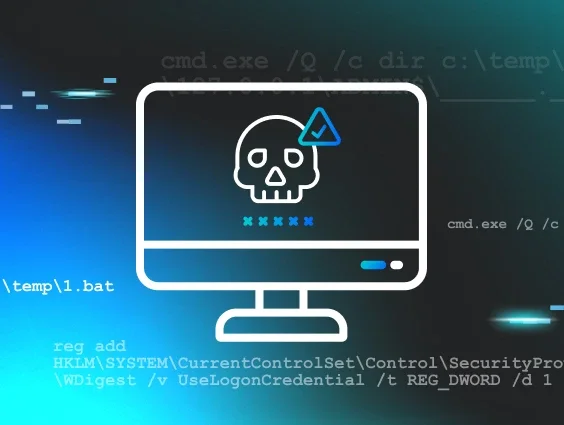Let’s face it, nobody loves getting unsolicited, irrelevant, and often suspicious messages cluttering their inboxes or bombarding their social media feeds. These messages, commonly known as spam, aren’t just annoying…they can also be dangerous. But what exactly is spam, how does it impact businesses, and what can you do to protect yourself from it?
What is spam?
Spam—in the context of the internet and not the versatile canned meat product—doesn’t stand for anything specific; rather, it’s a term adopted from the Monty Python comedy sketch where the word “spam” is humorously repeated ad nauseam.
Today, spam refers to unwanted and unsolicited digital messages sent in bulk, usually for advertising, phishing, or spreading malware. Spam infiltrates various digital channels with one primary goal: to capture your attention, often at a cost to your privacy, security, or time. For businesses, spam isn’t just a nuisance. It’s a potential threat that can lead to data breaches, reputational damage, and costly downtime.
Let’s look at the different types of spam and how they can impact you or your organization.
Types of spam you need to watch out for
Spam comes in various forms, and it’s crucial to understand its different types to recognize and combat it effectively.
1. Email spam
Email spam is the most common form of unsolicited communication. These are bulk emails sent to multiple recipients, often with malicious intent. Typically, they can:
Contain phishing links that lead to fake websites
Include malware attachments
Promote counterfeit products or scams
For example, you’ve likely seen emails claiming you’ve won a lottery you never entered or urging you to click a link to "fix a problem with your account." Both are classic spam tactics.
2. Social media spam
Spam has migrated to social media platforms like Facebook, Instagram, and LinkedIn. You might come across spam comments promoting dubious products, unsolicited direct messages, or fake friend requests. A new form of social media spam is fake profiles being created and then posting items for sale in the Marketplace. These cyber criminals then demand a deposit or payment before receiving the item. Once you’ve paid off the criminal, there’s no way to get your money back.
Why would social media spam matter to businesses? Malicious social media spam can damage your brand by creating customer distrust or by leading unsuspecting users to scams disguised as promotions.
3. Messaging app spam
Apps like WhatsApp and Facebook Messenger are becoming fertile ground for spam. Fraudulent messages on these platforms often contain:
Suspicious links disguised as exclusive deals or offers
Fake notifications claiming issues with your account
Impersonations of people you know and trust
This type of spam often preys on your sense of urgency, urging you to act immediately, which is how many people become victims.
4. Phone spam
Unwanted calls or SMS spam bombard users with promotions or fraudulent schemes. If users take the bait, these types of spam can lead to annoyance, time loss, and even financial fraud. There has also been a rise in spam text messages sent to users regarding unpaid toll notices.
Risks of spam to your business
Spam is more than just a digital annoyance. It can pose serious risks to businesses of all sizes.
1. Phishing attacks
Spam is often the gateway to more sophisticated phishing attacks. Cybercriminals disguise emails or messages to appear legitimate, tricking recipients into giving out sensitive information like passwords or financial details. For example, fake emails posing as your bank might request login details under the guise of fraud prevention.
2. Malware distribution
Many spam messages include attachments or links infected with malware, such as ransomware, spyware, or keyloggers. Even one careless click could compromise multiple systems, leading to data loss or significant downtime.
3. Resource drain
Spam consumes valuable resources, from email storage space to employee time spent sorting through irrelevant messages. This inefficiency impacts productivity and drains IT budgets.
4. Reputational damage
Falling victim to a spam-driven attack can hurt an organization’s credibility. If customer data is compromised, trust breaks down, and you may even face legal repercussions or PR crises.
Keep your business a spam-free zone
Fortunately, there are actionable steps businesses can take to reduce the risks associated with spam and shield themselves from potential harm.
1. Implement advanced spam filters
Investing in robust email security solutions is your first line of defense. These tools can detect and block spam messages before they reach employees' inboxes. Look for filters that analyze factors like message origin, content, and attachments.
2. Educate employees on recognizing spam
Your employees are your best line of defense. Train them up with security awareness training to identify suspicious emails, messages, or links. Key things to look out for include:
Spelling or grammatical errors in the message
Suspicious sender addresses that don’t match the organization they claim to represent
Urgent or intimidating language asking for immediate action
3. Update your systems regularly
Outdated software is an open door for cybercriminals. Keep your operating systems, antivirus software, and email platforms up-to-date to protect against known vulnerabilities.
4. Use Multi-Factor Authentication (MFA)
If your account credentials are compromised due to phishing, MFA can act as a safety net to prevent unauthorized access. It requires users to verify their identity using an additional method before they can log in, like a text message code or an authentication app.
5. Monitor and secure your website
Spam isn’t just an email problem. Businesses should regularly audit their websites for vulnerabilities like injected malicious links and secure their platforms with web application firewalls (WAF) and bot detection systems.
6. Partner with anti-spam experts
Agencies and software providers specializing in spam prevention can offer additional layers of protection, from advanced threat detection to response strategies tailored to your business.
Building a proactive defense against spam
Understanding spam, its various forms, and the risks it poses is the first step toward safeguarding your business. The next step is turning that knowledge into action. Organizations that address spam threats proactively stand to gain a big advantage by protecting their resources, reputation, and bottom line.
Don’t wait until your inbox is overflowing with spam—or worse, your business falls victim to an attack. Stay vigilant, educate your team, and invest in the tools and strategies that keep your systems safe from spammers.


Protect What Matters









